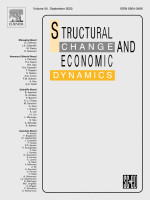Impact of water and energy infrastructure on local well-being: an agent-based analysis of the water-energy-food nexus

11.09.2020
Sustainable Development, Agent-Based Model, Water-Energy-Food nexus, Food Security, Infrastructure Development
Structural Change and Economic Dynamics, Volume 55, December 2020, Pages 165-176
Investments in infrastructure development are considered a key for economic growth, but their impact on well-being of rural populations is controversial. We propose an agent-based model to study the impact that water canals and electric grid development have on the Water-Energy-Food (WEF) nexus in a rural area. The analysis addresses the effects of hydropower infrastructure construction on basic needs satisfaction show the emergence of a competition for land between rural communities and water and energy sectors. Environmental heterogeneity is found to play a critical role, because physical exclusion and economic constraints may reduce the benefits of new service access for some intended beneficiares. These results have implications for government planning processes, as they emphasize the potential for infrastructure to cause appreciable, even if unintended, harm to local rural communities. The use of agent-based analysis like that presented here, can help to minimize unintended consequences and to inform compensation policies.
Investments in infrastructure development are considered a key for economic growth, but their impact on well-being of rural populations is controversial. We propose an agent-based model to study the impact that water canals and electric grid development have on the Water-Energy-Food (WEF) nexus in a rural area. The analysis addresses the effects of hydropower infrastructure construction on basic needs satisfaction show the emergence of a competition for land between rural communities and water and energy sectors. Environmental heterogeneity is found to play a critical role, because physical exclusion and economic constraints may reduce the benefits of new service access for some intended beneficiares. These results have implications for government planning processes, as they emphasize the potential for infrastructure to cause appreciable, even if unintended, harm to local rural communities. The use of agent-based analysis like that presented here, can help to minimize unintended consequences and to inform compensation policies.
